Nemp Is A Themable Music Player & Media Server With Cover Flow & Built-In Tag Editor
If you start counting the number of audio players available on Windows, you’ll probably lose your count sooner than you can imagine. Even here at AddictiveTips, we’ve covered plenty of media player and music management apps for our readers such as Audacious, Xion Audio Player, and Winyl, just to name a few. If you’re on the hunt for a feature-rich, elegant looking media management application, try Nemp. Abbreviation of Noch ein MP3-Player, it’s an open-source app that not only looks quite impressive on the surface, but also carries many advanced features under the hood. Apart from letting you listen to music from your local drive, the application can also act as a web server, enabling users to stream music remotely. In addition, it also allows connecting your Last.Fm account with it to stream music directly from there. Other nifty features include MP3 tag editor, supports for playlists, iTunes-inspired Cover Flow-like feature and more.
Nemp is a portable application and hence, it doesn’t require any installation whatsoever. Upon launch, it automatically starts a setup wizard that lets you specify a few basic settings regarding the app. The music management features of Nemp are also equally great. For instance, you can quickly add your music folder to the app via drag and drop. Similarly, you can create playlists in order to sort and organize your music collection. Each applet within Nemp’s interface is resizable, enabling you to easily adjust it according to your liking. The playback controls like play, pause, stop, next, previous etc. can be found in the middle section of the UI. In addition, the application fully supports ID3 tags and album cover art.
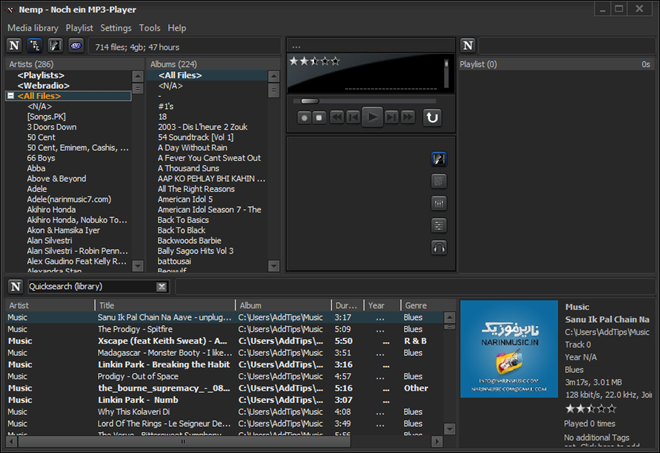
Speaking of album art, Nemp’s iTunes-esque Cover Flow feature looks very fascinating and lets you navigate albums using the mouse wheel. The animation looks fairly snappy and smooth. Apart from Cover Flow, you can also switch to Cloud Tag view. This mode is also quite interesting and scales up the tags according to their usage in your music library.
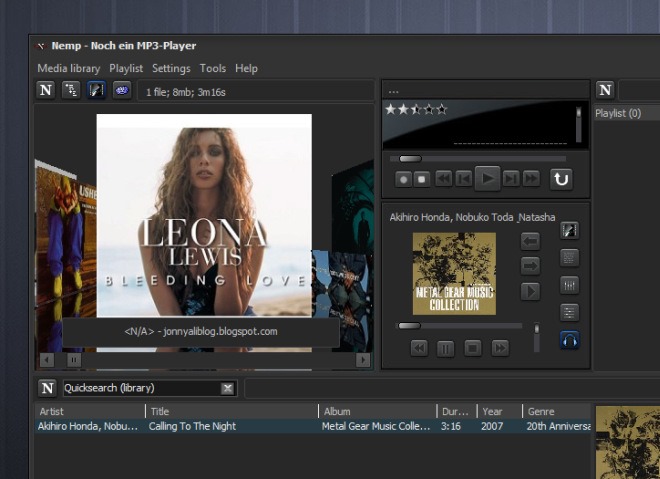
The application allows you to add custom tags under the Tagcloud Editor window, which can be accessed from the Tools menu. In this window, you can add, merge, rename as well as delete tags. In short, there’s quite a lot of flexibility and control in there.
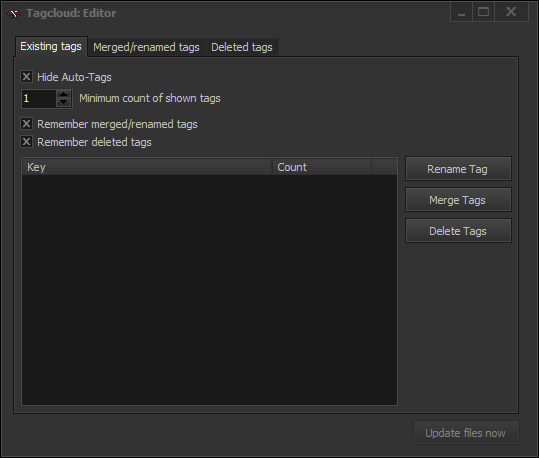
Most advanced music management apps let you create personalized playlists, rate songs and edit metadata information, and Nemp is no exception either, supporting all the aforementioned features. The Tools menu that I mentioned earlier houses a few additional interesting options. For instance, you can schedule custom power actions like log off, shot down, restart or hibernate etc. based on playback. The birthday mode (which needs to be configured under the Preferences window first) can be activated from here as well. This acts as a party mode that Nemp automatically enables upon a user-specified time. The Tools menu also allows activating the Webserver and accessing the pertaining settings to configure the required parameters like username, password, IP address etc.
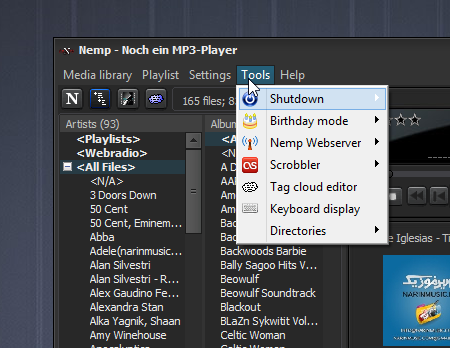
Nemp also allows to scrobble your music to your Last.fm account. Understandably, you’ll need to configure your account first to make it work, and you can do that from the Preferences console. You’ll also find a massive set of other options in the Preferences console, organized under General, Viewing options, Player settings and File management sections.
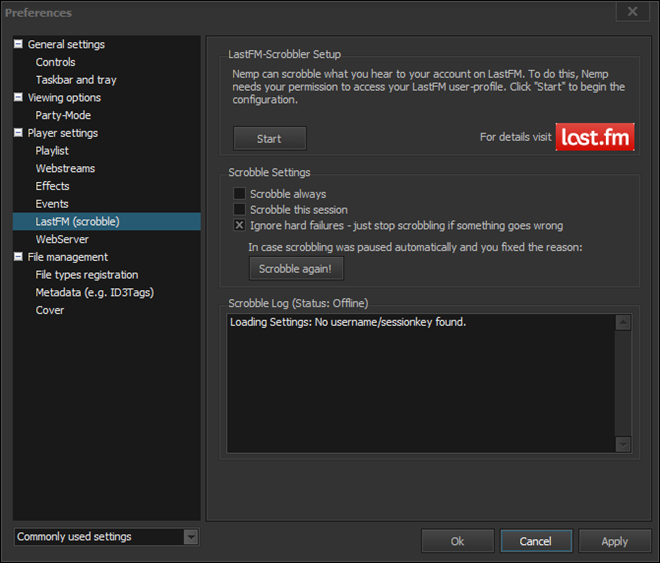
The General settings features the basic set of options related to the app. For instance, you can assign hotkeys to playback controls and tinker with a few tray/taskbar settings. Playlists, webstreams, webserver, effects and Last.Fm related settings are available under Player Settings.
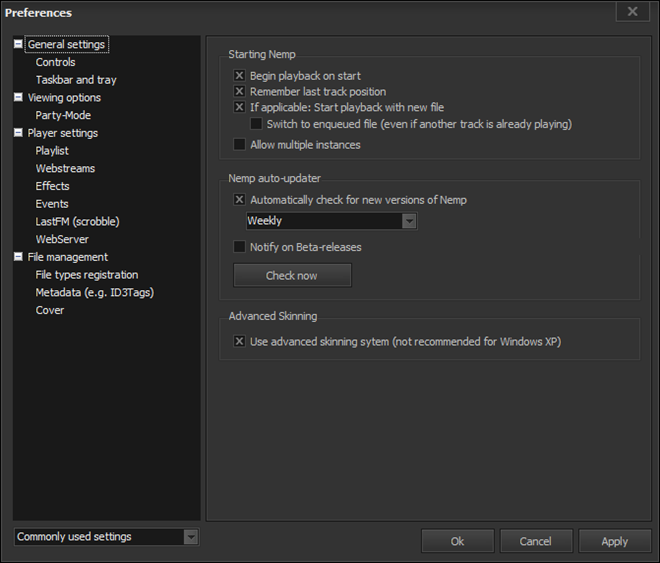
Overall, Nemp is an impressively feature rich app with lots of options and features to play with. Testing of the app was carried out on Windows 8 Pro, 64-bit.

visually appealing, but one thing that annoys me is that when you double click on a song in the library, other Media players play the whole album containing the track. which is useful. but this player only the track.